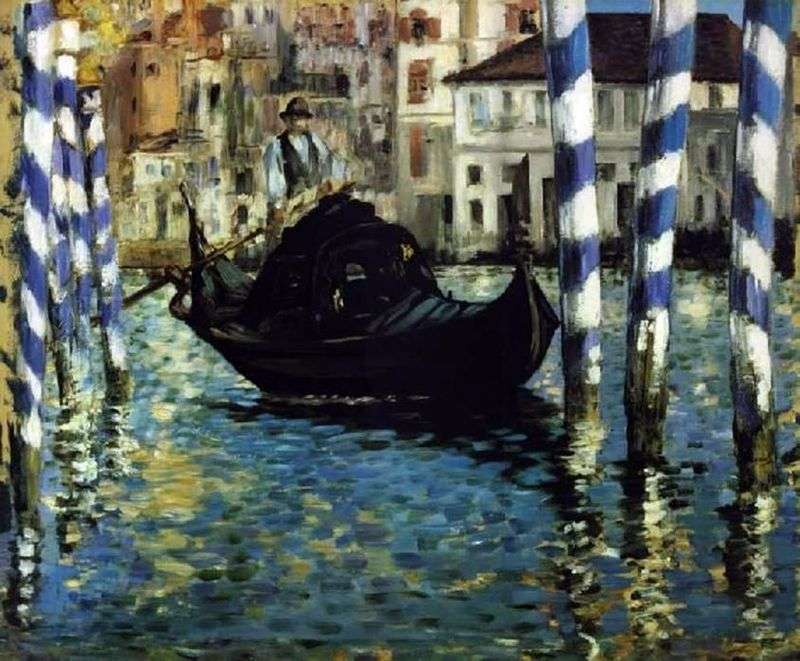
This canvas, which was included in the retrospective exhibition of E. Manet at the School of Fine Arts in 1884, was seen by his contemporary critic Joseph Peladon, who wrote: “An unusually small canvas represents a corner of the Grand Canal of Venice. Water and sky are indigo-colored, white mooring columns intertwined with blue stripes.
This symphony, where blue – the main color does not seem ridiculous and unreal. I saw Venetian noonmarks of the exact same color; but Mane exaggerated the impression almost to a fantastic level. Behind these efforts, an unhappy person who was in love with transparent tones, you recognize his search for light, his exceptional idealism… “The buildings in the background are painted unreal, seem to be taken from an imaginary Mediterranean. Manet traveled to Venice in the autumn of 1875 with his wife and artist James Tissot.
This world-famous museum city, mysterious and unforgettable, with flowing canal streets, the main of which is the Grand Canal, has caused delight among poets, musicians, artists from Byron to Foscolo, from Canaletto to Canova and Wagner throughout all ages. The Grand Canal – now transparent and calm, now uplifting with foam, now gloomy, depending on the color of the sky and the season – the artist remembered how the unique look of charming Venice is alive, playing with the sun.
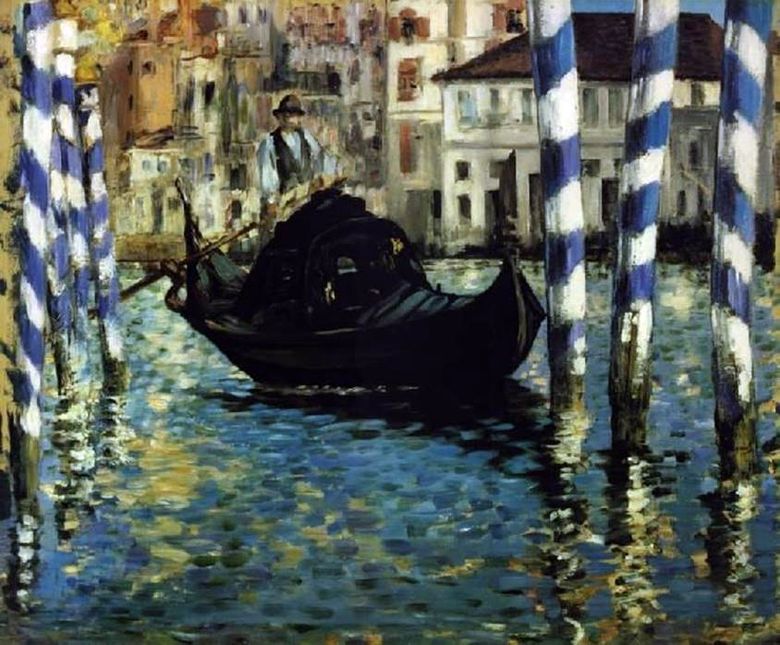 Grand Canal. Venise – Eduard Manet
Grand Canal. Venise – Eduard Manet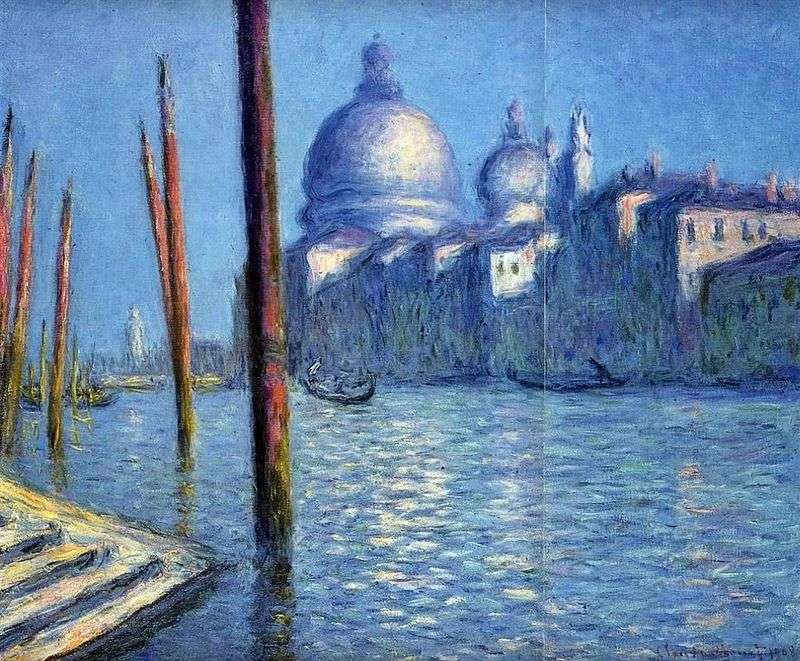 Views of Venice (Grand Canal) by Claude Monet
Views of Venice (Grand Canal) by Claude Monet The Grand Canal: a view to the northeast on the Rialto Bridge by Antonio Canaletto
The Grand Canal: a view to the northeast on the Rialto Bridge by Antonio Canaletto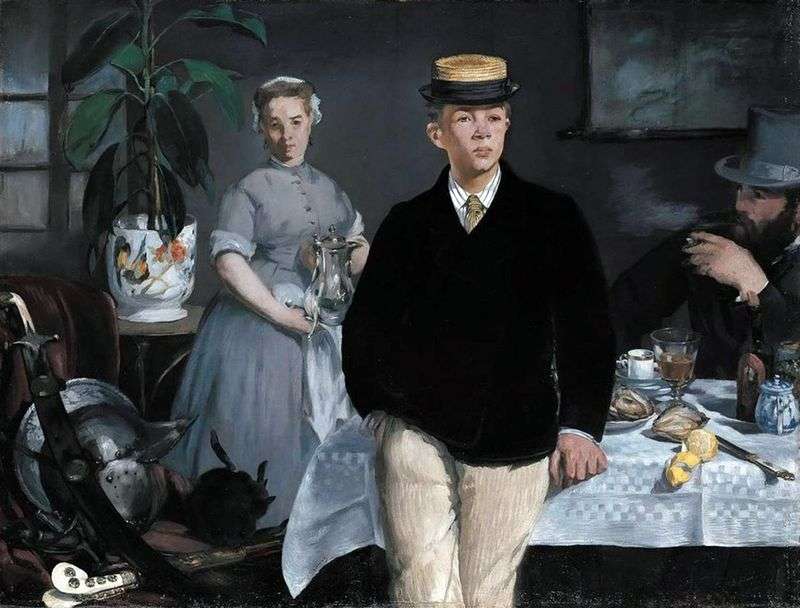 Breakfast in the workshop by Edouard Manet
Breakfast in the workshop by Edouard Manet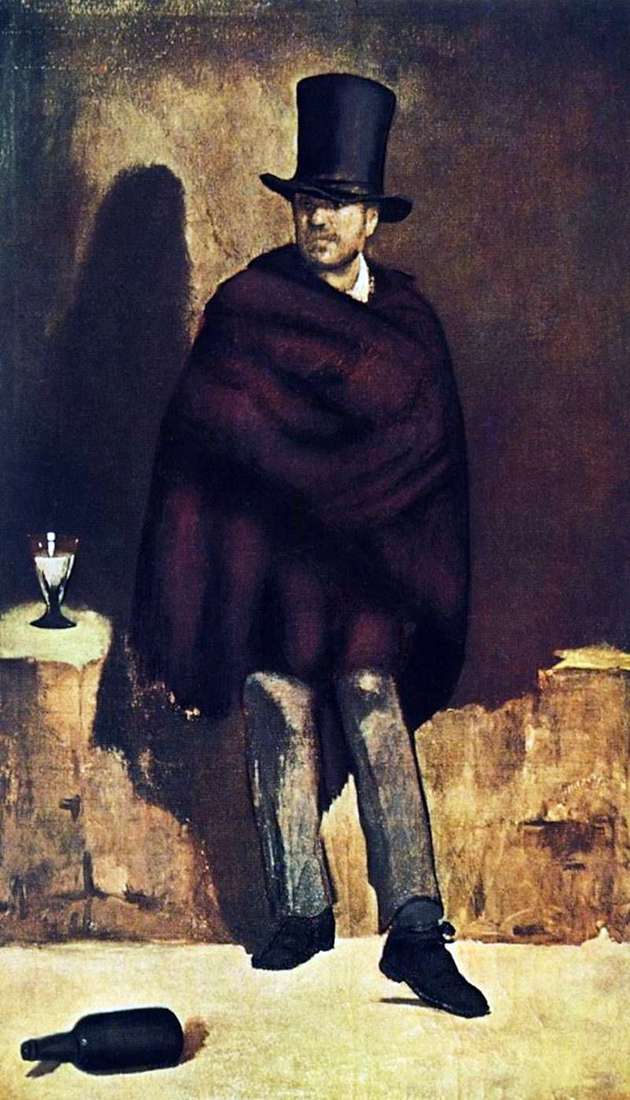 Absinthe Lover by Edouard Manet
Absinthe Lover by Edouard Manet Horse Racing on Longchamp by Edouard Manet
Horse Racing on Longchamp by Edouard Manet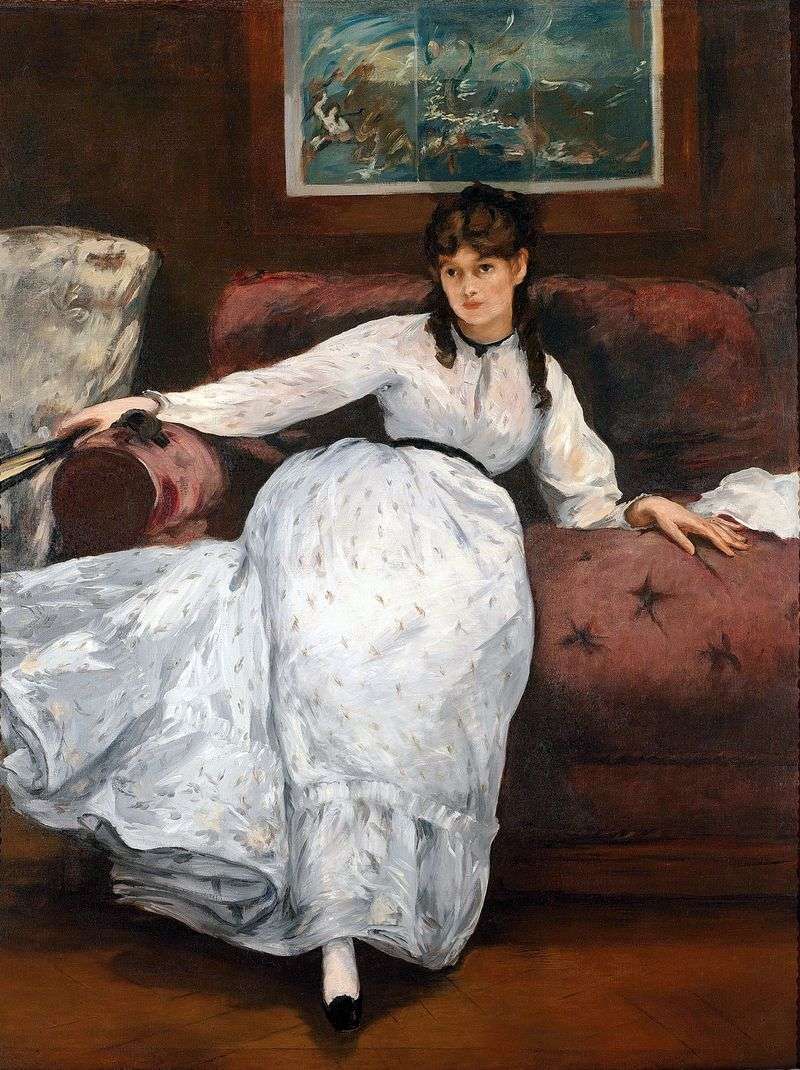 Portrait of Bertha Morizo by Edouard Manet
Portrait of Bertha Morizo by Edouard Manet Boat Studio Claude Monet by Edouard Manet
Boat Studio Claude Monet by Edouard Manet